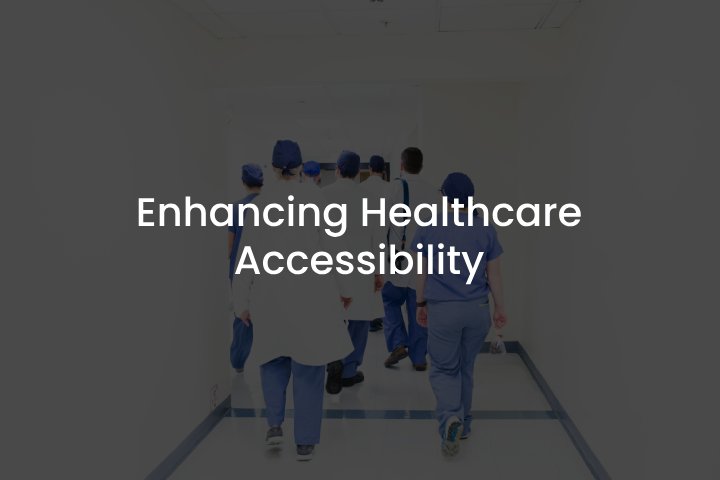
How to Enhance Healthcare Accessibility for Patients and Service Providers
Today, the healthcare sector has been making significant steps in improving patient experiences and overall operational efficiency. A recent project undertaken for our US-based healthcare client is a great example of this trend.
The solution focuses on enhancing appointment scheduling capabilities for clinics, simplifying the billing process for both doctors and patients, receiving prescriptions by the patients, ensuring data security, and more. The main objective of this project was to provide practices with more appointments and clients by developing a unified scheduling system.
Project on Enhancing Healthcare Accessibility Overview
The primary goal of this project was to streamline the scheduling process for patients and clinics, ensuring a consistent and user-friendly experience across multiple platforms. This became especially important after the client’s recent merger with another partner to provide even more services within a single product. The merger required the unification of all functionalities into a cohesive system.
The Agiliway development team was tasked with creating a third platform to integrate the two pre-existing products, delivering a seamless experience for patients and healthcare service providers across the newly formed healthcare marketplace.
Key Tasks and Objectives
The project’s success relied on several critical tasks and objectives, primarily centered around product enhancement. The most significant undertaking was the development of a unified scheduling widget. This involved several steps:
- Integration of Existing Systems: The team had to merge two distinct scheduling systems into a single, unified platform. This required a comprehensive understanding of both legacy systems and the new requirements of the merged entity.
- User Experience: Ensuring that patients had the same scheduling experience regardless of which of the original platforms they were using was paramount. This meant standardizing the user interface and user experience (UI/UX) across all platforms.
- Scalability and Flexibility: The new system had to be scalable to accommodate future growth and flexible enough to integrate with the client’s broader healthcare marketplace strategy.
Challenges and Complexities
The project was not without its challenges. One of the most complicated aspects was the migration from backend-calculated availability to frontend-calculated availability. This shift was necessary to separate widget functionality and ensure a smooth user experience during the transition period.
- Backend to Frontend Migration: Traditionally, the availability of appointments was calculated on the backend. Shifting this calculation to the front-end presented several technical challenges. The team had to ensure that the front-end system could handle the load and complexity of availability calculations without compromising performance.
- Dual Support During Transition: During the lengthy launch period, the team had to support both the old and new systems simultaneously. This dual support was crucial to ensure continuity and reliability of service for all users, requiring meticulous planning and execution.
- Data Synchronization and Consistency: Ensuring that all data remained consistent and synchronized across the various platforms was another significant hurdle. This was particularly challenging given the need to maintain data integrity and accuracy during the transition.
Solutions, Outcomes, and Future Directions
To address the above challenges, the team utilized the following solutions:
- Phased Deployment: The team opted for an incremental rollout strategy, gradually migrating functionalities from the old system to the new one. This approach allowed for continuous testing and feedback, minimizing the risk of major disruptions.
- Testing Framework: A comprehensive testing framework was established to ensure the new system’s reliability and performance. This included automated testing scripts to handle the increased complexity of front-end calculations.
- User-Centric Design: Emphasis was placed on user-centric design principles to ensure that the new functionality was intuitive and easy to use. This involved extensive user testing and iterative design improvements based on user feedback.
The Agiliway development team successfully delivered a unified scheduling platform with appointment reminders and helped integrate a billing solution, that enhanced the overall experience for patients and clinics. The new system provided a seamless and consistent user experience across all platforms, meeting the client’s objective of increasing appointments and client engagement.
As the healthcare marketplace continues to evolve, the platform is well-positioned to incorporate new features and functionalities, further improving healthcare accessibility and patient satisfaction.
Conclusion
The development of the unified system for the US healthcare client is a great example of how innovative solutions help overcome complex challenges. By focusing on user experience and adopting the best software development strategies, the project team successfully navigated the complexities of merging multiple systems into a cohesive, efficient platform. This highlights the critical role of effective project management and technical expertise in driving advancements in the healthcare domain.


